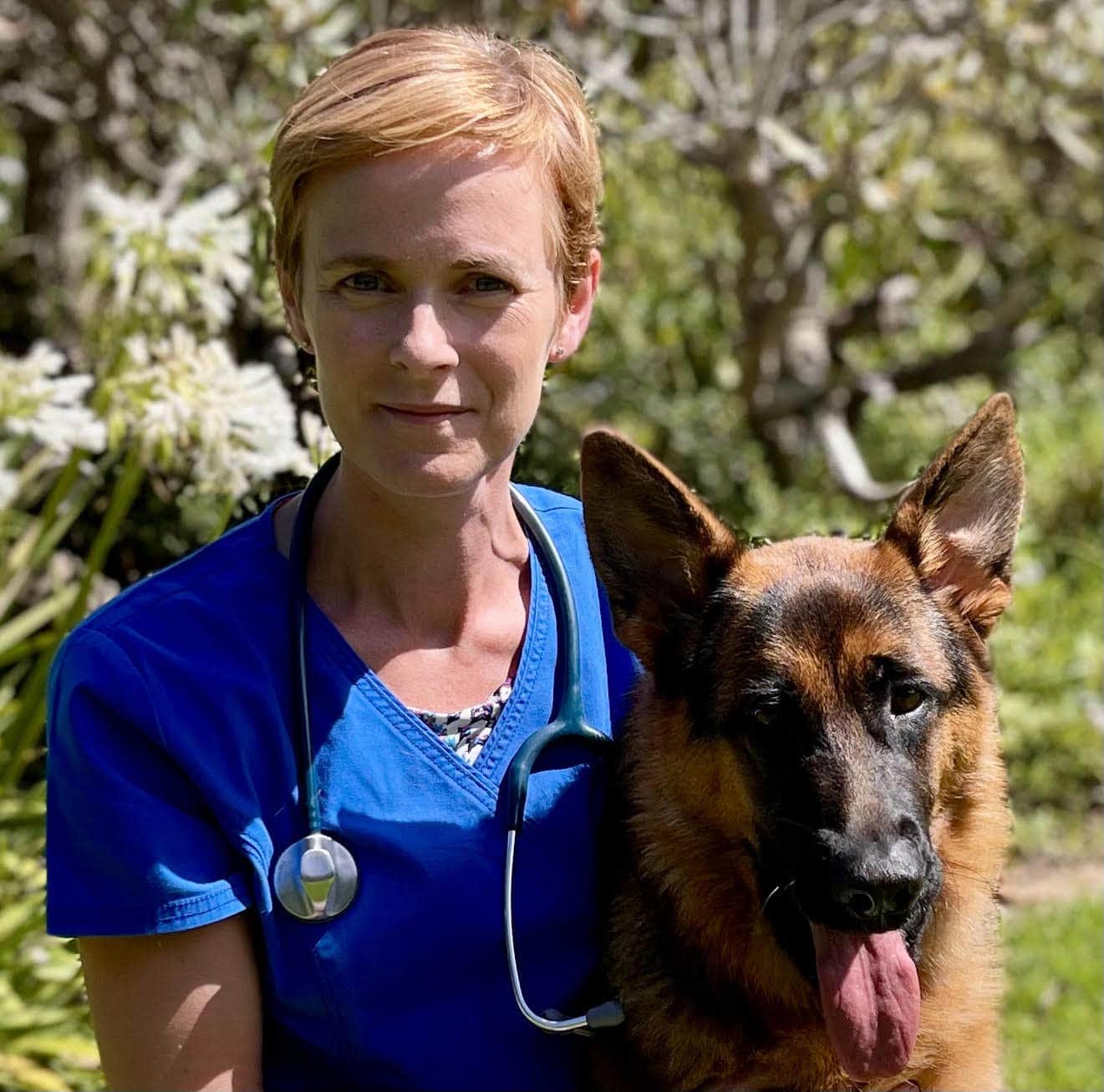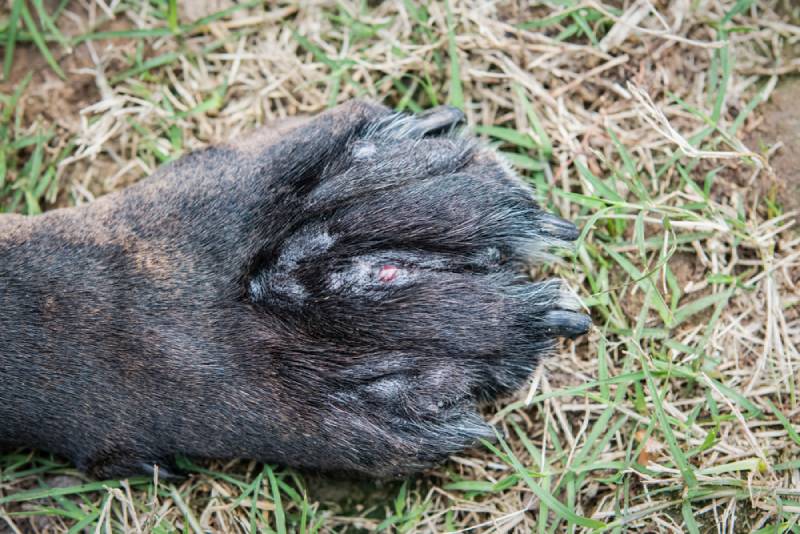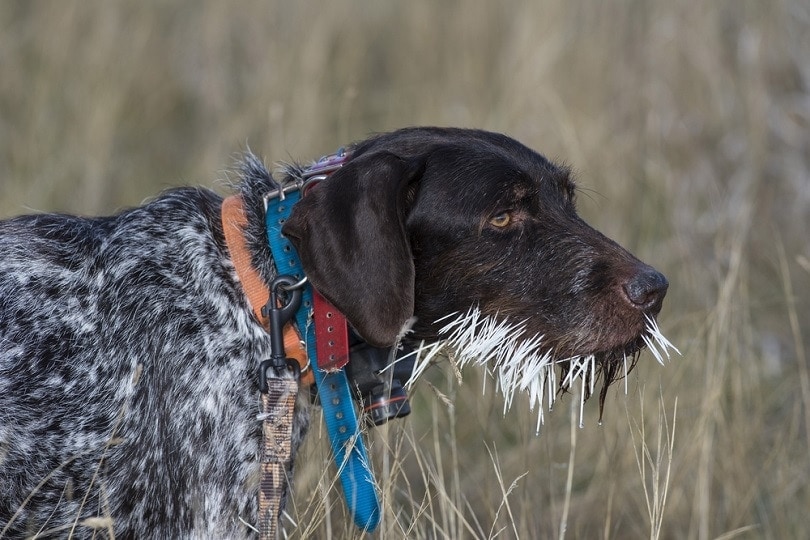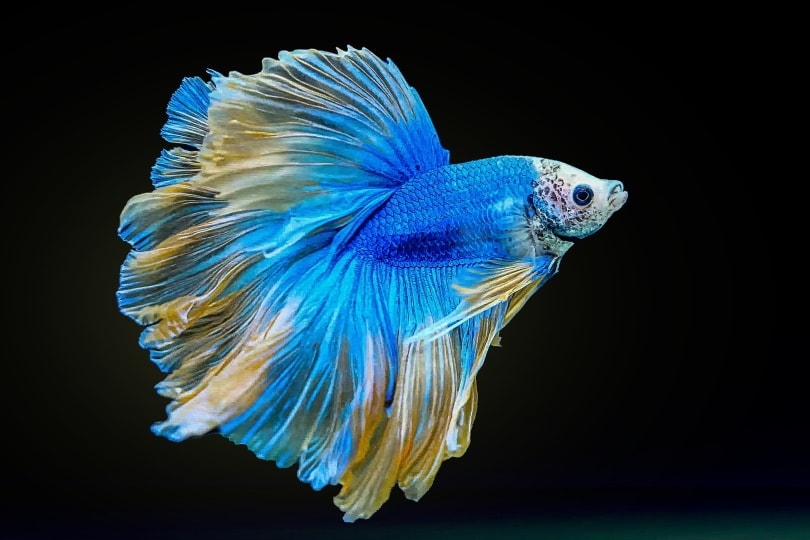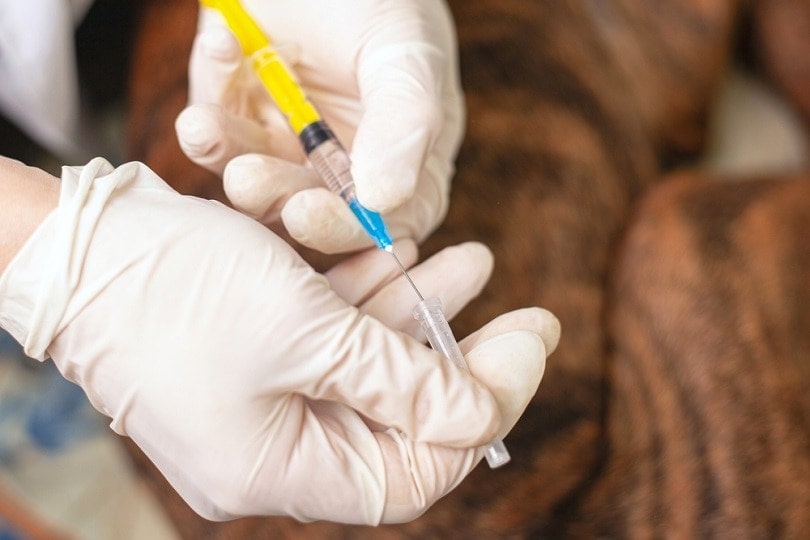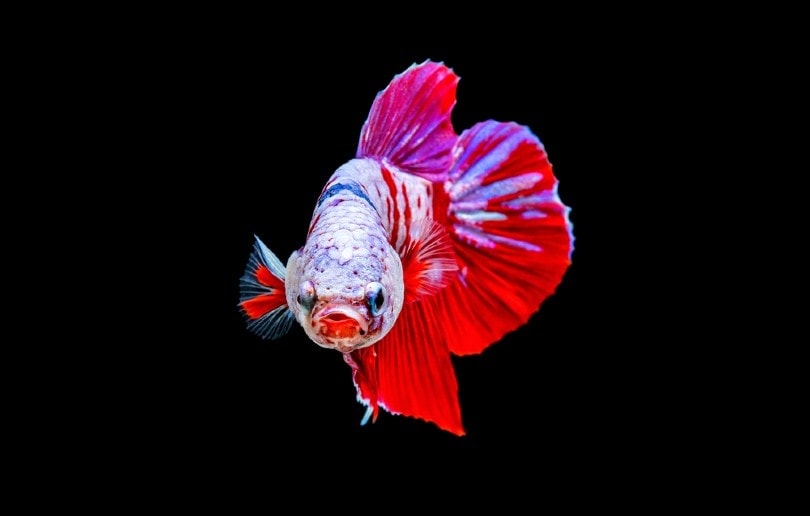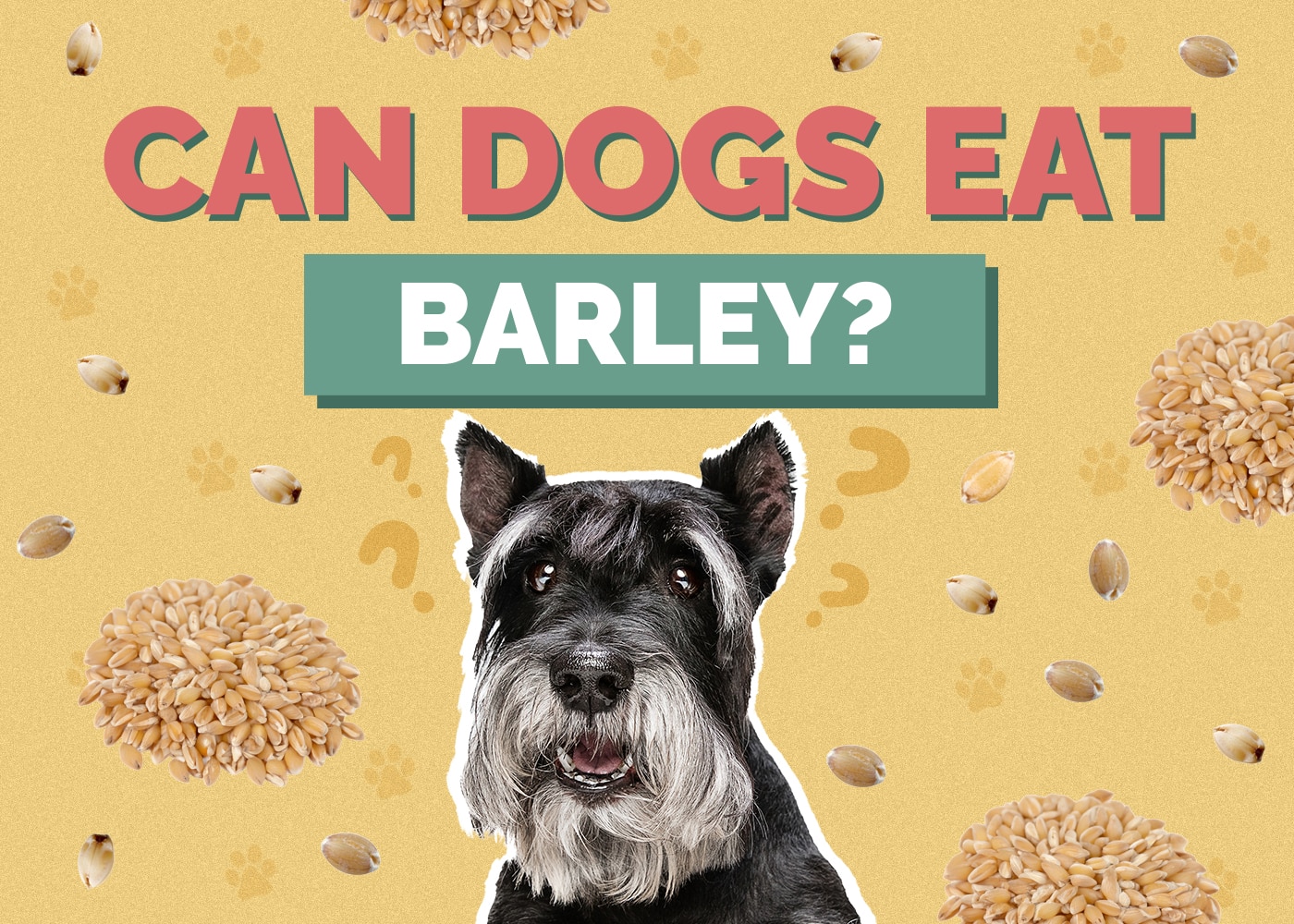Can Dogs Eat Prosciutto? (Vet Reviewed Facts & FAQ)
By Ashley Bates
Updated on
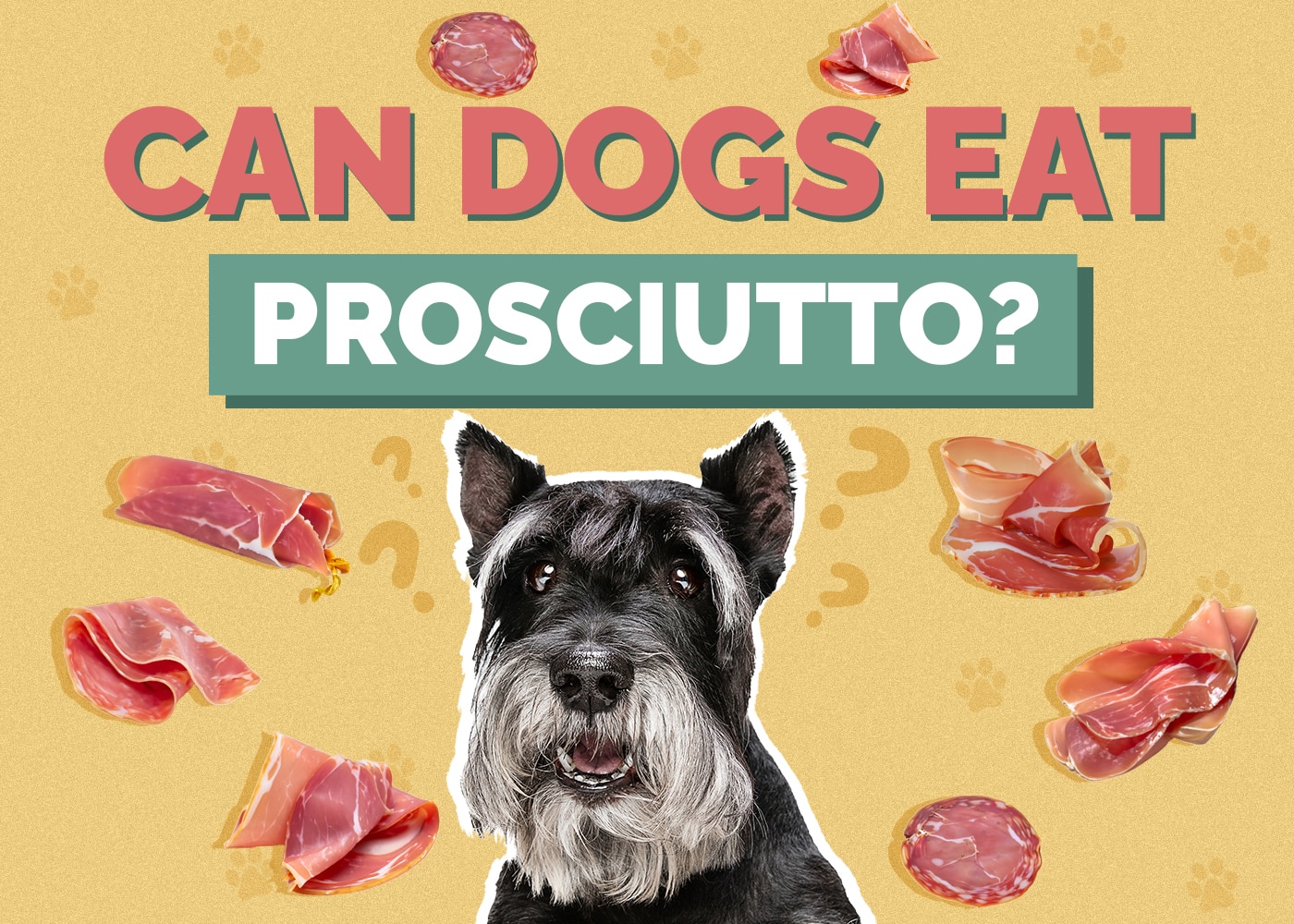
It’s no secret that our doggy friends absolutely thrive on protein, whether it’s in their dog food bowl or on your dinner plate. Since that’s the case, you might wonder if your dog can have a little prosciutto. After all, it’s a yummy protein.
There are several reasons why your dog shouldn’t eat prosciutto or many other table scraps. While it likely won’t hurt your dog in very small quantities, it can have some pretty hefty consequences if they eat a lot. Let’s explain.
What Is Prosciutto?
Prosciutto is an Italian meat that might sound fancy but is translated simply to “ham.” These sections come from the legs of the swine, creating thin, fatty cuts. The meat is covered in sea salt and stored for a few weeks to cure.
The sea salt creates a barrier and draws out all blood and moisture from the meat. This process is called dry-curing, making it safe for humans to eat the contents raw.
While this is a delicacy among people, it is not the correct animal protein to feed your dog. So, if you’re thinking of giving your dog a slice, let us explain why you should think again.
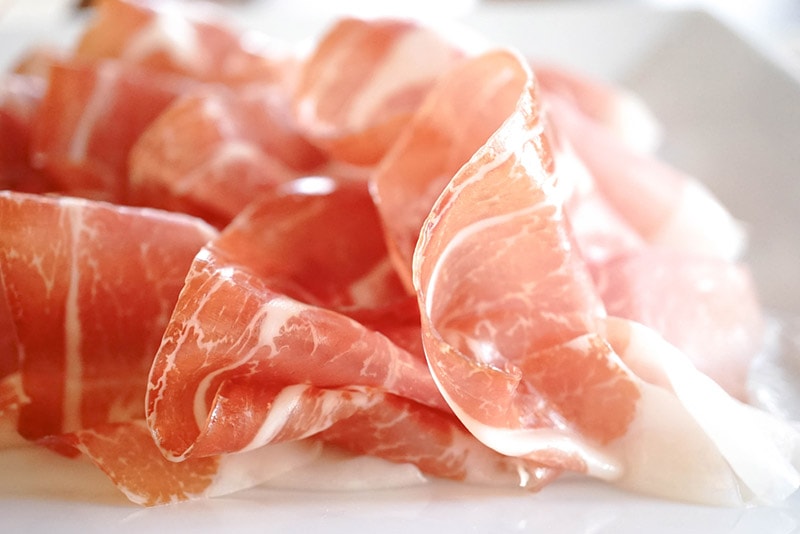
Prosciutto Nutrition Facts
- Calories: 55
- Total Fat: 2.4 g
- Cholesterol: 20 mg
- Sodium: 764 mg
- Potassium: 145 mg
- Carbohydrates: 0.1 g
- Protein: 7.9 g
Fat, Sodium, and Spices—Oh My!
You might think that because prosciutto is meat, it’s perfectly acceptable for your dog to have a little. However, it’s so packed with fat, preservatives, and salt, even a little can cause some gastrointestinal trouble.
If your dog got into just a little prosciutto on their own, it might not cause such excessive symptoms, but it can undoubtedly disrupt its gastrointestinal tract. So, to be safe, you should be on the lookout for tummy troubles. Call your veterinarian if you are concerned about your pet.
Here’s a closer look at ingredients in prosciutto that your dog shouldn’t have too much of.
Fat
Your dog definitely needs fat in their diet to thrive. However, they get enough in their daily rations and need no more. Too much fat in the diet can negatively impact your canine’s overall health. Two significant risks include obesity and acute pancreatitis.
Obesity doesn’t look dangerous, but it can create substantial issues. Obesity can lead to poor heart health, diabetes, and significant inflammatory load. It can also significantly decrease your dog’s ability to exercise, later creating issues with bones and joints.
Too much fat in your dog’s diet can in some cases also lead to acute pancreatitis. Typically this condition is accompanied by obvious signs such as:
- Nausea
- Vomiting
- Praying position
- Depression
- Acute shock
- Death
Also, fat can sometimes destroy vitamin E, vitamin A, and linoleic acid, which can directly impact your dog’s coat and skin.
An excellent daily average is roughly 25% fat calories. So, it’s essential to watch out for those extra fat calories to keep your doggy in tip-top shape. It’s even easy to overdo it if you feed doggy-designated canned food, let alone when you’re offering fatty slabs of pork.
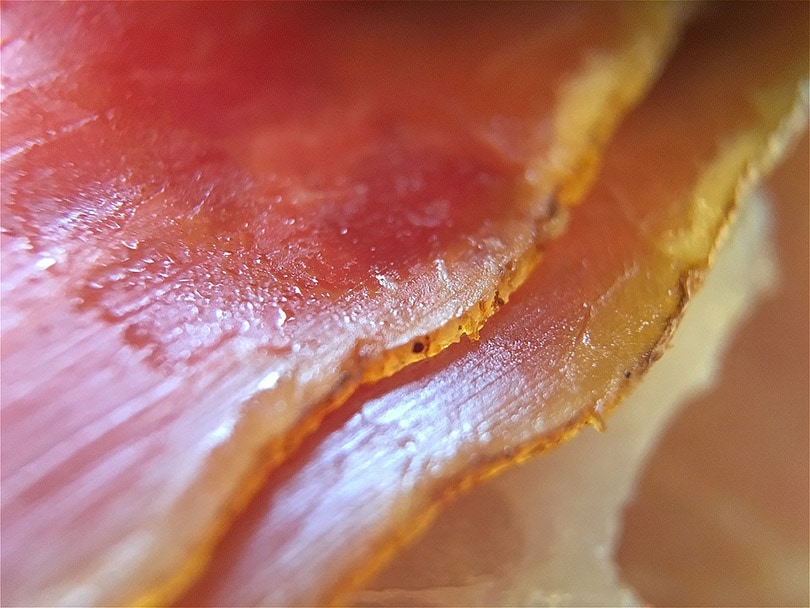
Sodium
Dogs definitely need sodium in their diet to function. Salt helps cellular function in the body, but too much can be disruptive. On average, your dog should have between 0.2g/1,000 kcal of dog food per day.
Prosciutto has a significant volume of sodium. As you can see above, one serving has a whopping 764 milligrams. This would be around double the daily amount of sodium recommended for a 20kg dog. However salt toxicity would require large quantities of salt to be consumed. Signs to monitor for salt intoxication include:
- Vomiting
- Weakness
- Rapid breathing
- Convulsions
- Trembling and twitching
- Kidney damage
- Convulsions
- Stiffness
- Diarrhea
- Excessive thirst
Most dogs will not eat enough to cause sodium chloride poisoning, but it is definitely something to watch for if you are unsure how much they consumed or have worries about underlying health problems.
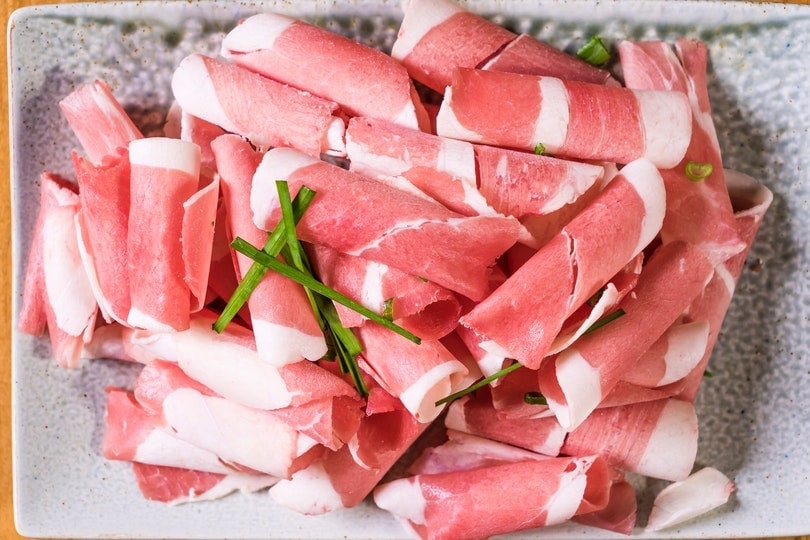
Spices
A medley of herbs and spices often accompanies meats like prosciutto. Some examples would be garlic, onion, chive, and anything else in the Allium family.
Allium plants contain thiosulfate, which causes oxidative damage to your pup’s red blood cells. This creates a condition known as hemolytic anemia.
While it is unlikely in such small quantities, here are some signs of the condition:
- Pale gums
- Listlessness
- Disorientation
- Yellow mucous membranes
Even if prosciutto doesn’t contain enough garlic or onion to cause this condition, it’s best to keep these seasonings away from your dog—always.
What to Feed Your Dog Instead
Rather than feeding your dog cured meats like salami, pepperoni, and prosciutto, it’s best to stay away from processed meats. If you want to give your dog a fresh dose of protein, stick with plain, boiled meat with no added seasonings.
Here are some delectable choices along with the health benefits of each.
Poultry
Poultry is a category of meat derived from birds. Dogs benefit from having poultry in their diet—unless they have a known allergy of some kind.
- Chicken
- Turkey
- Duck
Poultry builds lean muscle mass and promotes excellent bone health. It has omega-6 fatty acids that aid in a shiny, healthy coat and soft skin.
If you feed your dog poultry, make sure it is thoroughly cooked to prevent food-borne illnesses like salmonella.
Red Meat
Red meat is a protein-packed selection that will make any dog’s mouth water. But red meat is especially beneficial to high-energy pups, as it provides protein and fat to nourish the muscles and fuel the body.
- Beef
- Pork
- Lamb
- Venison
- Bison
Red meat is very high in protein, but it has many other valuable nutrients to mention, too. This meat offers a high amount of zinc, selenium, and B vitamins for dogs.
If you feed any red meat to your dog, make sure it is cooked to prevent bacteria and aid in digestion.
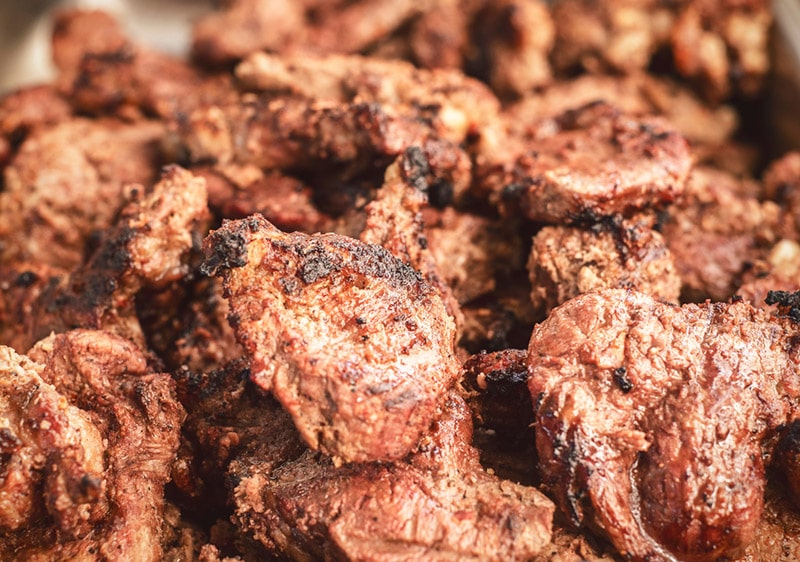
When to See a Vet
If your dog snuck a pretty hefty portion of prosciutto, you should contact your vet for advice. The risks of sodium chloride poisoning are low, but nothing to toy with. It’s always best to be safe rather than sorry.
However, if your dog has a small piece, your vet may recommend waiting and watching for signs of discomfort. Keep in mind that some dogs are much more sensitive than others. Some dogs have a stomach of iron, while others can barely handle specialty foods.
So, keep your individual pooch in mind, and don’t hesitate to make a trip if you’re uncertain or concerned in any way.
Conclusion
So, even though you might be thrilled to eat prosciutto alongside some specialty cheeses and crackers, keep it away from your pup. Even a small amount contains more salt than they need in their daily diet.
If your dog ate prosciutto without your permission and you’re unsure of the quantity, contact your vet and monitor for signs of illness. Rather than feeding prosciutto, you can give your dog a fast selection of fresh, cooked protein options—just make sure it’s seasoning-free!
